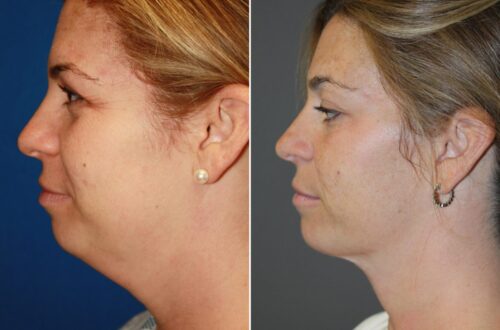
Distinguishing melasma caused by hormonal disorders from normal melasma
Differentiating between normal melasma and melasma caused by hormonal imbalances Melasma is a pathological disorder of skin pigmentation. Melasma can happen in the two genders however is more normal in ladies. There are two types of melasma: patches of melasma and deep melasma also called endocrine melasma. Mixed melasma is a clinical term for cases in which deep-seated and plaque melasma are simultaneously infected.
Endocrine Melasma
Endocrine Melasma Deep melasma is another name for endocrine melasma. An endocrine disorder causes the body’s hormones to be out of balance, resulting in hyperpigmented spots on the skin’s surface. Melasma is mostly caused by estrogen, which is a key sex hormone in the body. The hormone MSH, which stimulates the production of melanin under the skin, can be inhibited by estrogen in addition to its role in the body’s sexual functions.
Melasma and other skin conditions develop as a result of this uncontrollable production of melanin melanocytes, which is then gradually pushed to the surface of the skin for some reason and cannot be inhibited by MSH. Other pigments, like age spots and freckles, can cause endocrine disorders in the body, which can lead to deep melasma:
Menopause, premenopausal women. Women who are pregnant, after giving birth. Melasma can develop while taking birth control pills, especially those that contain progestin, or up to two months after stopping the medication. Melasma can also be brought on by irregular menstrual cycles. A disruption in the production of estrogen and several other hormones that facilitate the formation of melasma will also result from prolonged stress, which will also affect brain activity. Symptoms of endocrine melasma include:
Morphology: Endocrine melasma generally shows up as dull earthy colored detects, the light can see essential issues that concentrate more pigmented cells, hazier in variety. The melasma spots vary in size, with both large and small spots present. Location: Deep melasma typically appears symmetrically on the cheeks, occasionally in the temples, forehead, or arms, and rarely elsewhere. Deep melasma that isn’t treated can spread quickly to other areas. Clinically, endocrine melasma may be accompanied by symptoms of endocrine disorders like irregular menstruation, insomnia, fatigue, and a lack of appetite. acne… Melasma on the skin can indicate a body-wide endocrine disorder. Hormonal melasma treatment: Combine treatment of the symptoms with treatment of the cause.
A solution to the problem: Hormonal melasma is typically brought on by an internal disorder. Subsequently, in overtreatment, the principal thing to do is to re-balance the chemicals in the body, which can be by utilizing drugs or enhancing the eating routine as endorsed and directed by the specialist. Treatment for the symptoms: Melasma is treated with lasers and home care products to brighten, prevent melanin production, and promote healthy cell growth. Peels should be applied in moderation. Eat right, get enough rest, and don’t worry too much.
Common Melasma
Normal melasma, in contrast to hormonal melasma, is primarily brought on by external factors, but it can also caused by individual skin care and protection. The following are typical risk factors for melasma:
UV-ray-rich sunlight or blue light: Melanin’s very nature is to safeguard the skin. The body’s protective reflex will increase melanin secretion and push it to the surface of the skin when the skin is exposed to ultraviolet rays. To convert energy and lessen the impact of UV rays on the skin, these melanocytes will absorb UV rays. The skin is protected better when there is more melanin produced, but when there is too much melanin present to form the skin barrier, the skin becomes darker. Melasma is caused as a result of unprotected sun exposure. Skincare that isn’t done properly, using cosmetics of poor quality, using the wrong treatments for skin care, and using too many different kinds of peels. This is a common occurrence in numerous spa salons, from small to large. Hasty treatment, a lack of understanding of the melasma’s underlying causes, customers using peeling cosmetics with a lot of acids, and repeated use cause skin erosion and weakening. prone to being affected by ultraviolet rays that either cause or exacerbate melasma. Melasma in women is unavoidably getting worse, even though environmental pollution is not a direct cause. Normal melasma has the following clinical symptoms:
Morphology: Plaque melasma is how normal melasma appears, in contrast to deep-seated melasma. In healthy skin, melanin pigment cells do not form a single cluster but rather are disperse throughout the skin’s surface and cluster together in large groups. Location: Like profound leg melasma, typical melasma shows up on the cheeks, brow, sanctuaries, and in some cases on the arms (phenomenal). Endocrine disorders are not present in the body in conjunction with normal melasma. Various comorbidities show side effects of the issue, yet all the same very few.
Traditional treatment for melasma: Combine laser treatment with special products that can regenerate cells and stop the production of melanin. Reduce the number of peeling steps. During the treatment, change your eating regimen, change your healthy skin as well as utilize proper beauty care products, particularly focusing on sunscreen and supplements to build the skin’s obstruction. When the skin is expose to sunlight or ultraviolet light, protect it actively. Although plaque, deep leg pigmentation, normal skin pigmentation, and endocrine melasma are not harmful to health or life, they have a significant impact on facial aesthetics and make people feel inferior. suffer, particularly among women. Melasma is straightforward to treat assuming you pick the right treatment strategy and ability to appropriately deal with your skin.
The Tri-Luma cream, which works incredibly effectively to treat melasma, is the optimum combination of three substances in the right amounts.




